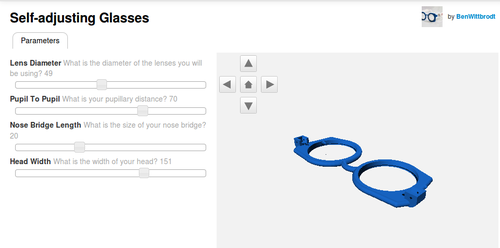J.M.Pearce (talk | contribs) m (→See also) |
J.M.Pearce (talk | contribs) m (→See also) |
||
| Line 32: | Line 32: | ||
* [[Distributed manufacturing with 3-D printing: a case study of recreational vehicle solar photovoltaic mounting systems]] | * [[Distributed manufacturing with 3-D printing: a case study of recreational vehicle solar photovoltaic mounting systems]] | ||
* [[Global value chains from a 3D printing perspective]] | * [[Global value chains from a 3D printing perspective]] | ||
* [[Development of a Resilient 3-D Printer for Humanitarian Crisis Response]] | |||
==Media Coverage== | ==Media Coverage== | ||
Revision as of 11:59, 9 March 2018
Template:Statusboxtop Template:Status-design Template:Status-prototype Template:Boxbottom
Source
- J. Gwamuri, B. T. Wittbrodt, N. C. Anzalone, J.M. Pearce. “Reversing the Trend of Large Scale and Centralization in Manufacturing: The Case of Distributed Manufacturing of Customizable 3-D-Printable Self-Adjustable Glasses”, Challenges in Sustainability 2(1), pp. 30-40 (2014). DOI: http://dx.doi.org/10.12924/cis2014.02010030 open access

Abstract
Although the trend in manufacturing has been towards centralization to leverage economies of scale, the recent rapid technical development of open-source 3-D printers enables low-cost distributed bespoke production. This paper explores the potential advantages of a distributed manufacturing model of high-value products by investigating the application of 3-D printing to self-refraction eyeglasses. A series of parametric 3-D printable designs is developed, fabricated and tested to overcome limitations identified with mass-manufactured self-correcting eyeglasses designed for the developing world's poor. By utilizing 3-D printable self-adjustable glasses, communities not only gain access to far more diversity in product design, as the glasses can be customized for the individual, but 3-D printing also offers the potential for significant cost reductions. The results show that distributed manufacturing with open-source 3-D printing can empower developing world communities through the ability to print less expensive and customized self-adjusting eyeglasses. This offers the potential to displace both centrally manufactured conventional and self-adjusting glasses while completely eliminating the costs of the conventional optics correction experience, including those of highly-trained optometrists and ophthalmologists and their associated equipment. Although, this study only analyzed a single product, it is clear that other products would benefit from the same approach in isolated regions of the developing world.
Additional Information
- Self-adjustable glasses literature review
- Collection of 3D printed glasses designs - some may be useful ideas
- Customizable glasses design for this paper
- OpenSCAD files:
See also
- Open-source, self-replicating 3-D printer factory for small-business manufacturing
- Open-source Lab
- Open source optics
- Open source 3-D printing of OSAT
- Open-source hardware
- OphthalmicDocs Fundus - a 3D printed universal smartphone retinal imaging adapter.
- Distributed manufacturing with 3-D printing: a case study of recreational vehicle solar photovoltaic mounting systems
- Global value chains from a 3D printing perspective
- Development of a Resilient 3-D Printer for Humanitarian Crisis Response

